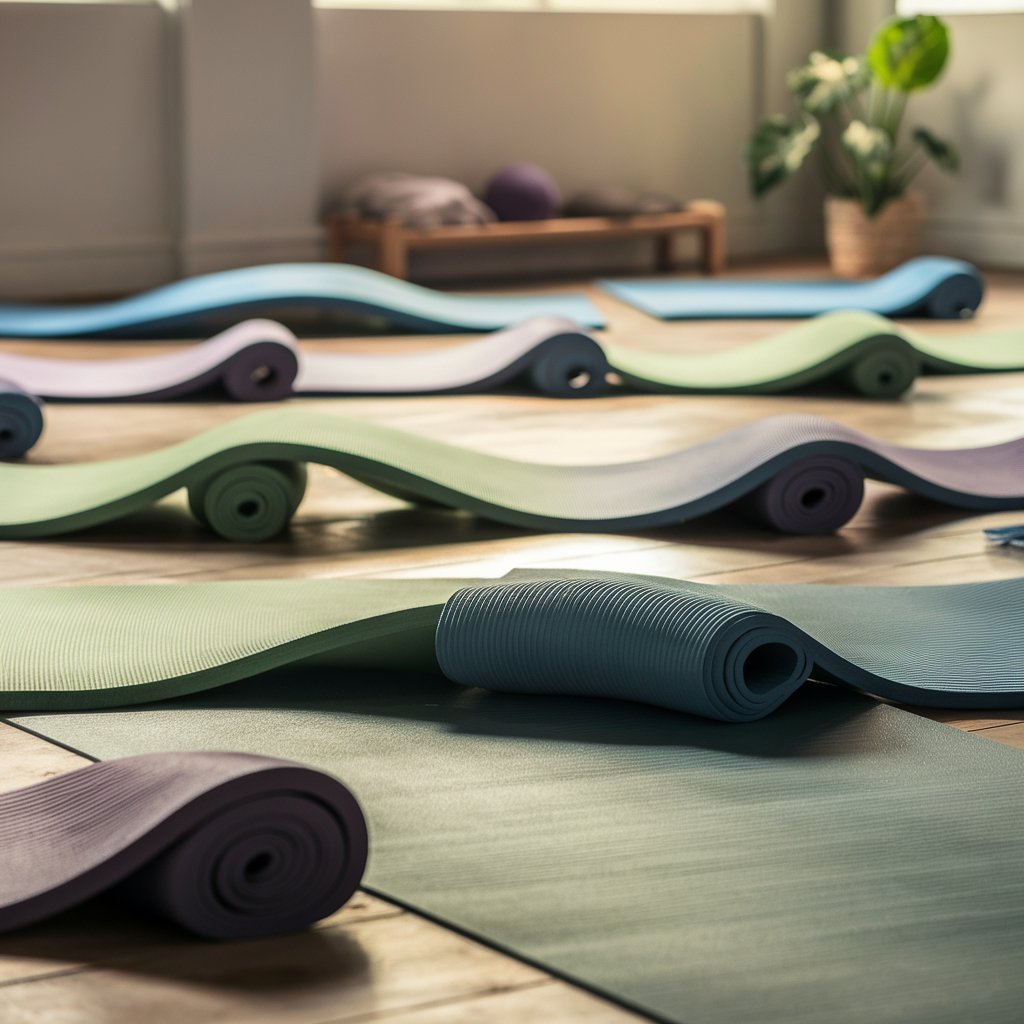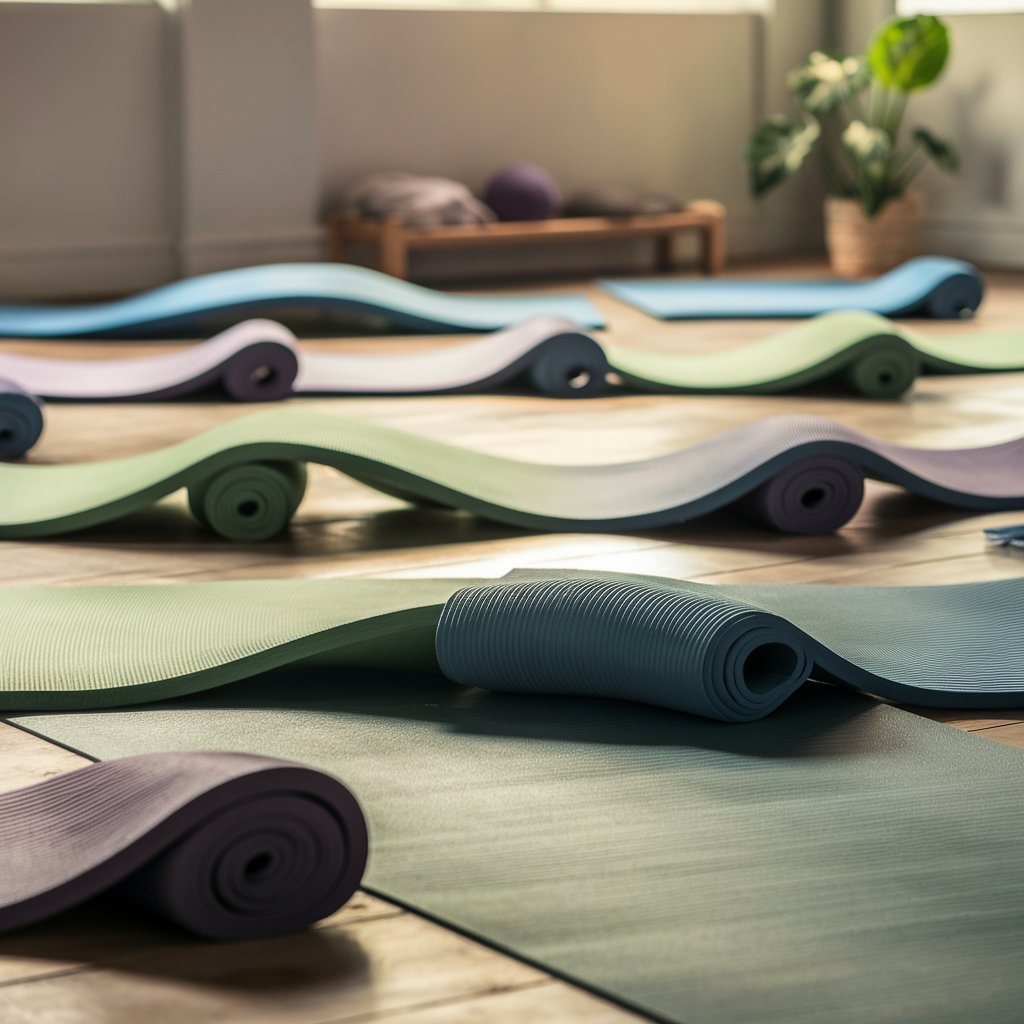
Gym mats are necessary equipment for anyone who frequently practices yoga. The correct mat provides a sturdy and pleasant surface, which not only supports your body but also improves your practice. Choosing the ideal gym mat may have a big impact on your entire experience, regardless of your level of yoga expertise. We’ll go over what to look for and why selecting a yoga mat is important for getting the most out of your practice in this tutorial.
Gym Mats and the Importance of Material
Gym mats are more than simply a basic yoga prop. They are essential to maintaining the efficacy and safety of your practice. A good mat cushions your joints, keeps you from slipping, and gives you a designated area to practice your postures. You could experience discomfort or instability if you don’t have the right mat, which could impede your progress and enjoyment.

Gym Mats: Choosing the Right Material
When selecting a gym mat for yoga, the material is a critical factor to consider. Yoga mats come in a variety of materials, each offering different benefits:
- PVC Mats: These mats are durable and offer excellent cushioning. They are also easy to clean, making them a popular choice for many practitioners. However, PVC is not the most eco-friendly option.
- TPE Mats: Thermoplastic elastomer (TPE) mats are a more environmentally friendly choice. They are lightweight, offer good grip, and are free from harmful chemicals.
- Natural Rubber Mats: Made from natural rubber, these mats are biodegradable and provide superior grip and cushioning. They are ideal for those who prefer eco-friendly products and a more secure footing.
Each material has its strengths, so consider your personal preferences and needs when making your choice.
Gym Mats: Thickness and Cushioning Considerations
Another crucial factor to think about is the gym mat’s thickness. The usual thickness of mats is between 1/16 and 1/4 inches. For those with joint problems or for activities involving a lot of floor activity, thicker mats provide additional cushioning. On the other hand, practices that include a lot of balance and standing postures are better suited for thinner mats since they offer superior stability.
Strong mats may add comfort without sacrificing support. Select a thickness based on your comfort level and the demands of your particular practice.
Gym Mats: Ensuring Grip and Traction
Grip is one of the most important aspects of a yoga mat. A mat with inadequate traction may cause slips and falls, which might endanger your exercise routine or result in harm. Seek for mats with textured surfaces or ones made with improved grip in mind. Additionally, certain mats have anti-slip properties, which can offer extra security—especially during sweaty workouts.
Gym Mats: Size and Portability for Your Lifestyle
It’s important to select a gym mat that meets your demands because they come in a variety of sizes. The majority of mats have normal lengths, but if you need more room for your practice or are taller than average, consider bigger alternatives. For convenience, if you want to travel with your mat, think about getting a lightweight, folding model.
For people who practice yoga on the go, portability is essential. Having a mat that is simple to roll up and transport may greatly improve your practice regimen.
Gym Mats: Cleaning and Maintenance Tips
Regular cleaning is crucial to ensuring a hygienic practice area and extending the life of your gym mat. The majority of mats may be cleaned with a mix of water and mild detergent. For detailed cleaning recommendations, refer to the manufacturer’s instructions for mats composed of natural materials.
Maintaining your mat properly will keep it looking brand new and guarantee that it is still safe and cozy to use.
Gym Mats: Eco-Friendly Options for a Sustainable Practice
Take into consideration eco-friendly gym mats if you’re worried about how your yoga equipment will affect the environment. Natural rubber, cork, or recycled materials are common sustainable resources used to make these mats. You may enjoy the advantages of a premium mat while also helping to create a more sustainable earth by going for eco-friendly solutions.
Conclusion
Choosing the right gym mat for yoga requires taking into account a number of elements, such as size, grip, material, and thickness. You may increase practice, comfort, and safety by choosing a mat that suits your requirements and tastes. You will be well on your way to a more pleasurable and productive yoga practice with the correct mat.




